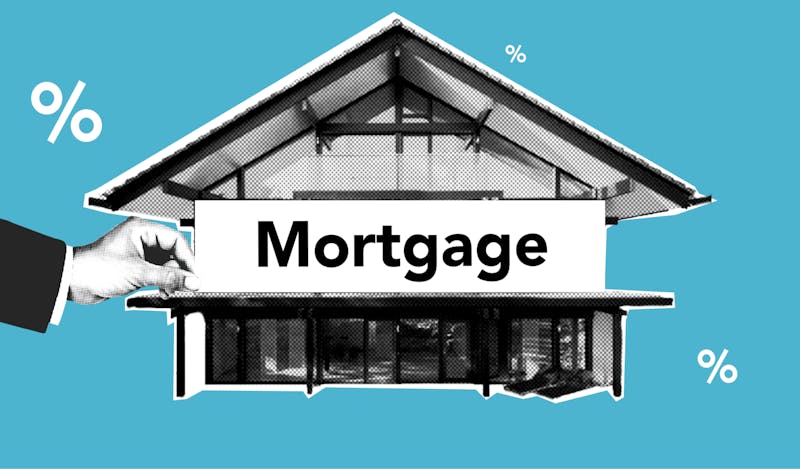So, you’ve decided to take the exciting step towards homeownership in Canada. You’ve familiarized yourself with the basic concepts of mortgages through our previous blog post on mortgage basics, and now you’re ready to dive deeper into the process of qualifying for a mortgage. Whether you’re a first-time homebuyer or a seasoned investor, understanding the intricacies of Canadian mortgage qualifications is essential to your success.
In this detailed guide, we will explore the key factors that determine your eligibility for a mortgage in Canada. From deciphering credit scores and debt-to-income ratios to unraveling the complexities of down payment requirements, we’ve got you covered. But it doesn’t stop there—our journey continues as we navigate the often-misunderstood landscape of the mortgage stress test, shed light on self-employed mortgage qualifications, and uncover the array of incentives available for first-time homebuyers.
Understanding Canadian Mortgage Qualifications
For anyone looking to secure a mortgage in Canada, understanding the qualification criteria is the first crucial step. Here’s a deeper dive into what lenders typically consider:
Credit Score: The credit score acts as a reflection of your creditworthiness. While a score of 680 or above is often seen as favorable for mortgage approval, many lenders are willing to consider applicants with a score of 650. However, it’s worth noting that the minimum credit score required by default insurers is 600. Those with a score below the preferred range might still get approval, but possibly at higher interest rates.
Debt-to-Income Ratio: This ratio represents how much of your income is dedicated to paying off debts. In Canada, the Gross Debt Service (GDS) ratio—which includes mortgage payments, property taxes, heating expenses, and 50% of condo fees—should not exceed 39%. The Total Debt Service (TDS) ratio, which incorporates all other debt payments, should be 44% or less. Alternate lenders, however, might offer more flexibility in these percentages.
Income Verification: Lenders will scrutinize your income to ensure you can manage the mortgage payments. For those with guaranteed income, even a job that’s as recent as one month can be considered. However, for individuals with fluctuating incomes, such as freelancers or self-employed individuals, a history of two years is typically required. To verify income, lenders might ask for several documents including:
- T4 slips from the last two years
- A recent letter of employment confirming your position, salary, and tenure
- A recent pay stub
- Bank statements showing the deposit of your pay.
Down Payment: The amount you can put down initially can significantly influence your mortgage approval. While it wasn’t explicitly mentioned in your comment, it’s crucial to note that in Canada, the minimum down payment can range from 5% to 20% based on the property’s price. The larger the down payment, the more favorable the loan terms might be.
Down Payment Requirements in Canada and the Mortgage Stress Test
One of the frequently asked questions among potential homebuyers in Canada is, “What is the minimum down payment required for a home loan?” Typically, the down payment requirement starts at 5% for homes priced up to $500,000. However, for properties beyond this price point, an additional consideration comes into play. The down payment is 10% on the portion of the home’s price that exceeds $500,000. For instance, if you’re purchasing a house for $550,000, the calculation would be $500,000 x 5% ($25,000) plus $50,000 x 10% ($5,000), resulting in a total down payment of $30,000. Furthermore, when the property’s purchase price surpasses $1,000,000, the minimum down payment becomes 20% or more.
Moreover, most lenders require a history of the down payment over the past 90 days. This history can be documented through bank statements or other appropriate means, offering transparency and reassurance to lenders regarding the source and stability of the funds.
Another pivotal aspect of Canadian mortgage eligibility centers around the mortgage stress test. This test is a crucial tool utilized by federally regulated lenders to gauge whether a borrower can comfortably manage their mortgage payments should interest rates rise. To qualify, borrowers must demonstrate their ability to meet their loan obligations at the higher of either 5.25% or 2% more than the interest rate offered by the lender. This stress test serves as a safety measure, ensuring that borrowers have a financial cushion against potential economic uncertainties.
Self-Employed Mortgage Qualification and First-Time Homebuyer Incentives
For self-employed individuals seeking clarity on the specific requirements to secure a mortgage in Canada, it’s important to recognize that while the process might involve additional complexities, a range of lenders specifically caters to self-employed professionals. Demonstrating a stable income becomes a pivotal factor, and meeting the standard qualification criteria—such as maintaining a satisfactory credit score and adhering to a healthy debt-to-income ratio—remains essential.
Typically, lenders often request a two-year history of income to ascertain financial stability for self-employed applicants. However, it’s noteworthy that certain specialized programs offer an accelerated path, allowing individuals to qualify for a mortgage as soon as six months after becoming self-employed.
In terms of documentation, self-employed individuals typically need to provide Notices of Income Tax assessment for the previous two years. Additionally, bank statements, business financial statements, and a complete T1 tax return form are often required to provide lenders with a comprehensive view of financial stability and creditworthiness.
First-time homebuyers in Canada are presented with unique opportunities as well. Various programs and incentives, including the First-Time Home Buyer Incentive and the Home Buyers’ Plan, are designed to alleviate the financial strain associated with purchasing a home.
Mortgage Pre-Approval and Affordability Calculations in Canada
Applying for a mortgage in Canada involves a vital preliminary step known as pre-approval. During this process, a potential lender reviews your financial situation and provides an estimate of the maximum mortgage amount you could qualify for. This pre-approval isn’t a guarantee of a final mortgage approval, as changes in your financial situation or property details can affect the final decision.
Meanwhile, calculating your mortgage affordability can help you identify your price range for house hunting. Various online tools, like the mortgage affordability calculator in Canada, can assist you in this. These calculators consider your income, existing debts, property taxes, and expected mortgage interest rate to estimate how much mortgage you can comfortably afford.
However, these tools are meant to provide estimates and should not be used as a definitive guide. The actual amount you can afford may differ depending on various other factors, including the mortgage approval guidelines in Canada and your personal comfort level with housing expenses. To navigate these complexities, it’s advisable to consult with a mortgage professional or financial advisor.
Understanding how to qualify for a mortgage in Canada is a crucial step in the home buying journey. It involves recognizing the Canadian mortgage eligibility criteria, including credit scores, debt-to-income ratio, down payment requirements, and the type of mortgage that suits your financial condition and risk tolerance. It’s also about knowing how to navigate the Canadian home loan approval process and utilizing available tools like mortgage affordability calculators. The process might seem complex, but with thorough preparation and possible assistance from mortgage professionals, you can position yourself for successful mortgage approval. Always remember, the ultimate goal is to secure a mortgage that matches your financial capacity and homeownership dreams. With the right steps, your path to a successful home buying experience in Canada becomes clearer and more attainable.



